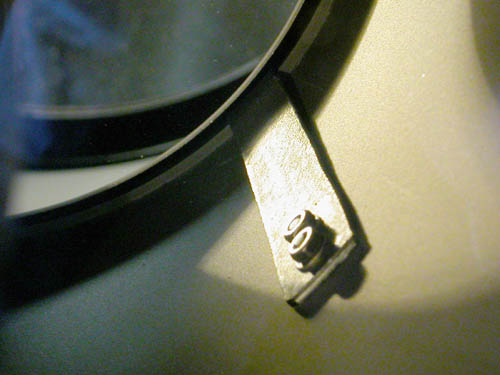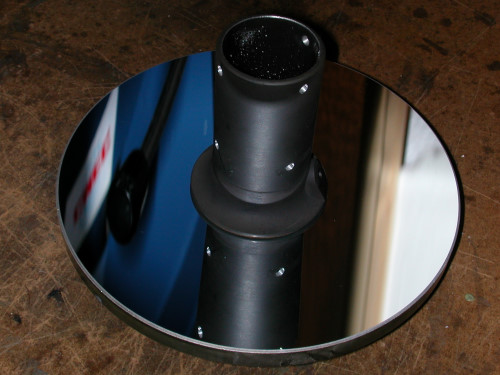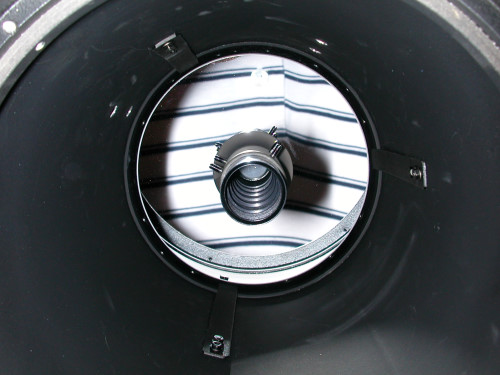|
Intruments:
Meade SC 20cm f/10
|

It's a good optic, very versatile and
suits
about for all the fields of the observation and the astronomic
photography.
In the image above it's mounted inside two strong aluminum rings, and
with
a Meade 9x60 finder with illuminated eyepiece and 90° prism, a true
luxury to center the objects.
The principal problem of the optics is
the mirror shift, or the
bending of the principal mirror that vary in different
positions in the sky, it causes moved stars in long focus and long
exposure
imaging. A solution is to block the mirror, as described in the
wonderful
book of Robert Reeves "Wide-Field Astrophotography", page 429. The
modifications need the insertion of three plastic thin plates around
the mirror at 120°,
that are folded up by three screws so that the plates block the mirror.
After the modifications the tests
on the field have shown that
the problem is reduced a lot, but non eliminated. I can take CCD images
of 30 minutes exposure guided with a refractor in
parallel. But be aware that the blocking force is very critical: too
much will ruin the optical performance aiming to large stars, while too
small will not correctly fix the mirror.
That's why some time after the
modification, I've made another one using a different principle:
blocking the central tube with six M5 grains (4 on the part in front of
the main mirror, and 2 behind). The result is much better considering
that the mirror is not deformed, but I've found that in my OTA the
primary mirror shift is not the only on the optical system. So for high
quality deepsky works I cannot exceed 5 min exposures, more will show
trailed stars due to differential flexure between main scope and
guiding optics. See the images below for details.
The
first modification with lateral plastic foils (2001)


Left: one of the plastic
foils attached inside the tube: in the rest position it does not touch
the mirror.
Right: external view: at
left the screws that block the foil, at right the screw that push the
foil
toward the mirror.
The
second modification with grains on the central tube (2003)


The main mirror (203 mm diameter) with the four M5 threaded holes on
the central tube.


The back of the main mirror, with other two threaded M5 holes. The
white glue was used from the manufactured to prevent the blocking ring
to unscrew.


An approximate drawing of the modifications (left) and the internal of
the tube after the modifications (right).


Detail of the M5 grains (left) that can be screwed with a screwdriver
from outside the tube thanks to six holes (right).











